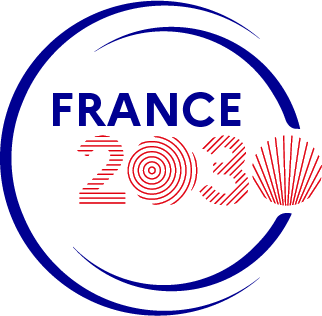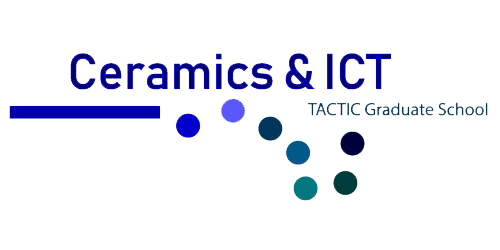You are here
Fibre Photonic : Innovative fibre laser and sources for a broad spectral coverage
For medical, military and industrial applications, the aim of the participants of this project is the achievement of innovative fibre sources operating in unusual spectral or power domains. We develop our own rare-earth-doped composite fibres which often exhibit complex but realistic structures. For un-doped or soft glass fibres, we collaborate with Project "Fibre Photonic : Next generation of optical fibre" or other national or foreign laboratories. With this aim, project members work in close collaboration with numerous teams at local, national or international level.
Composite laser fibres, toward power scaling of fibre laser sources:
High power fibre sources in continuous or pulsed regime are of interest both for medical, industrial and scientific communities due to their reliability, compactness and broad spectral band of emission. Combining high power and single mode beam is a major challenge of current research. Due to the strong space-time confinement of electric field in the waveguide, power scaling suffers of nonlinear effects (gain saturation, self-phase modulation, stimulated diffusion ...) which can be harmful, especially in pulsed operation, to the opto-optical efficiency or possibly to the pulse duration. In this context, one objective of the project is the design of ytterbium doped fibre for the development of high power transversally singlemode light sources. This has already been obtained experimentally using different optical fibres.
All solid tailored micro-structured cladding:
All solid tailored micro-structures cladding made of high index media (Ge doped silica for instance) can allow singlemode emission from multimode core thanks to implementation of a modified total internal reflexion regime. Such cladding apply selective coupling conditions on guided modes and can couple high order core modes and cladding modes, implying the electric field spreading in the cladding. On the contrary, the fundamental mode remains well confined in the active medium. In laser regime, single transverse mode emission is observed due to natural modal competition for well design structures. Such a large core made of highly doped material (refractive index rises with Yb content), surrounded by tailored all solid high index structured cladding can overcome usual technological limits encountered in LMA fibre fabrication using MCVD and solution doping.
Theoretical refractive index profile
(a) SEM image of fibre cross section showing structured cladding (coll. IPHT, Jena, Germany); (b) Measured near field intensity distribution of emitted beam
Design and fabrication has been supported by ANR in the framework of a project entitled "FOCALASE". For the experimental work, the project benefited from the facilities of the Group of Scientific Interest GRIFON CNRS (involving XLIM, PhLAM-University of Lille and LPMC-University of Nice) and from a collaboration with the Institute of Photonic Technology (IPHT JENA, Germany).
Rare-earth doped 1-D Photonic Bandgap fibres:
The unusual structure of the one-dimensional Photonic Bandgap fibres (commonly called Bragg fibres) allows the propagation of a single mode characterized by a very large effective area (Aeff / lambda2 ~ 650) while keeping acceptable confinement loss for the use a few meters long piece of fibre (length required for laser applications). Such an optical fibre combined with a large rare-earth ions doped core (i. e. a large active volume) fulfills the conditions to obtain very high output powers. Regarding the spatial beam quality emitted at the output of the fibre, such a structure allows to minimize the guidance of the high order modes with a preferential amplification of the fundamental mode. A key parameter about the development of high power laser sources is their compactness. This criterion is validated here by the use of these fibres since they exhibit also low bend sensitivity in comparison with air/silica microstructured fibres. Recent works conducted within this project have enabled the fabrication of the first Yb-doped 1-D Photonic Bandgap fibre laser. The Bragg fibre used at the time had a 20µm-core diameter and the critical bend radius was lower than 6cm. More recently, a similar fibre exhibiting a 40µm core diameter has been developed (see figures below). An optical power of 150W has been measured at the output of the fibre in a continuous regime (resp. an average power of 82W in a femtosecond pulsed regime). The critical bend radius has been measured and is close to 10cm. Furthermore, it must be underlined that an excellent beam quality was measured (M2=1.12).
(a) 1-D Photonic Bandgap fibre: Dcore = 40 µm, Dinternal cladding = 239 µm; (b) Measured output power of the signal (lambdaP = 975 nm, lambdaS ~ 1050 nm).
Bragg fibre development has been supported by the ANR in the framework of project entitled "HiPoLYFF" and by the French Ministère des Affaires Etrangères (MAE). This work was conducted in collaboration with the Fiber Optics Research Center (FORC Moscow).
Ytterbium-doped large mode area fibre fabricated by granulated silica sintering:
A third axis consists in increasing the core diameter by decreasing core-cladding refractive index contrast. This method implies a 10-4 control of refractive index and very first results showed the advantages of this alternative method of fabrication based on granulated silica sintering. A 74 % slope efficiency has been experimentally obtained with a laser using this fibre as amplifier medium, demonstrating material homogeneity can match our goal.
(a) Refractive index profile of ytterbium doped fibre fabricated by sintering of granulated silica; (b) SEM image of fibre core; (c) Laser slope efficiency (inset spatial intensity distribution of multimode emitted beam).
Ytterbium-doped singlemode fibre fabricated by sintering of granulated silica is currently under process. These works are performed in collaboration with SILITEC FIBRE S.A. (Boudry Switzerland) and IPHT (Jena Germany).
Active non-linear fibres, towards multiple colour laser:
For several years, spatially coherent sources emitting very broad band spectra are intensivelly studied in many laboratories around the world. Microstructured optical fibres have widely contributed to the development of such sources, particularly when emission in the UV or visible domain is required. We propose here an innovative approach with a hybrid fibre structure in which several functions are performed. Indeed, the fibres used to generate broad band spectra are usually passive, the power of the exciting beam is consequently quickly decreased when the construction of the continuum is performed. To achieve low cost and compact source emitting a broad band spectrum without complex assemblies, we incorporate within the nonlinear fibre, the power amplification function. Maintaining or even increasing the power level in the non linear core of the fibre led to a significant improvement of the power transferred to the continuum as well as further expansion of it. The energy necessary for amplification may be provided by powerful but compact laser diodes, which do not interfere with the integrability of the source. The hybrid fibre we developed confines a pulse pump over a reduced effective mode area (few µm2) to promote the generation of the continuum. The ytterbium-doped core ensures amplification around 1.06 µm, but other rare earths are also considered. The fibre must also include an additional external cladding that could confine and propagate a high power multi-mode pump power.
(a) Example of improvement of spectral power density in the visible domain; (b) SEM image of double clad-Yb-doped non-linear fibre.
High-brightness sources for the mid-infr
The mid-infrared (mid-IR) wavelength band, ranging from 2 µm up to 10 µm, contains three atmospheric transmission bands and the characteristic vibrational wavelengths of a number of important organic molecular groups. Either mid-IR optronics counter-measures in the defense field or absorption spectroscopy, allowing for real-time identification of several types of chemical species including organic molecules, can take advantage of spatially coherent, high average power light sources. In this context, we develop high-brightness mid-IR light sources. Singlemode optical fibres are inherently well suited for the emission of nearly-diffraction limited beams. Mid-IR transparent glasses such as chalcogenide, tellurite or fluoride glasses are inherently more optically nonlinear that the silica. Third order nonlinearities can be advantageously used to frequency-convert a radiation from the near-IR to the mid-IR. In this context, we have chosen to take advantage of our experience in nonlinear optics and decided to collaborate with chemists for the fabrication of highly nonlinear mid-IR transmitting glass fibres as well as with laser specialists for the elaboration of pulsed pump sources, adapted to the high efficiency pumping of mid-IR glass fibres.In tight collaboration with the Centre des Lasers Intenses et Applications (CeLIA UMR CNRS 5107 Université de Bordeaux I) we have devised and set up an optical parametric amplifier pumped by a fibre-based chirped pulse amplification system. This wavelength tuneable light source emits a diffraction-limited radiation from 1.2µm up to 2µm with a high average power. Consequently, we can characterize a broad range of optical fibres. As an example we have pumped a heavy-metal-oxide glass photonic crystal fibre fabricated at the Institute of Electronics Materials Technology in Varsaw and obtained the first mid-IR supercontinuum in such kind of fibre (see Fig. a).We also collaborate with the Laboratoire Charles Fabry de l'Institut d'Optique (LCFIO UMR 8501 CNRS, Université Paris Sud) and use a home-made femtosecond light source emitting at 1.6µm to pump off-the-shelf fluoride glass fibres. In such a fibre we have generated a supercontinuum from the visible up to 4.2µm (see Fig. b). Such a high-brightness source is now used for instance to characterize hollow-core photonic crystal fibres for the infrared.

(a) Spectrum measured (solid line) at the output of the heavy-metal-oxide glass photonic crystal fibre pumped by the fibre-based optical parametric amplifier. Dashed line: spectrum computed by solving the generalized nonlinear Schrödinger equation; (b) Spectrum measured (solid line) at the output of the fluoride glass fibre pumped by the 1.6-µm fibre laser. Dashed line: spectrum computed by solving the generalized nonlinear Schrödinger equation. Inset: near field intensity distribution of the diffraction-limited beam at the output of the fibre.
Perspectives
Furthermore, the knowledge gained in recent years on photonic crystal fibres lead us to intensify our effort towards the development of laser sources emitting in the UV-visible domain (based for instance on the build up of a glow discharge in a gas filled hollow-core fibre). Finally, the first fibres based on ytterbium or erbium-ytterbium-doped zirconium nanocrystals have been fabricated. Beyond the spectroscopic interest, their optical efficiency will have to be investigated and optimized prior the use for unconventional wavelength laser emission.











 UMR CNRS n°7252
UMR CNRS n°7252